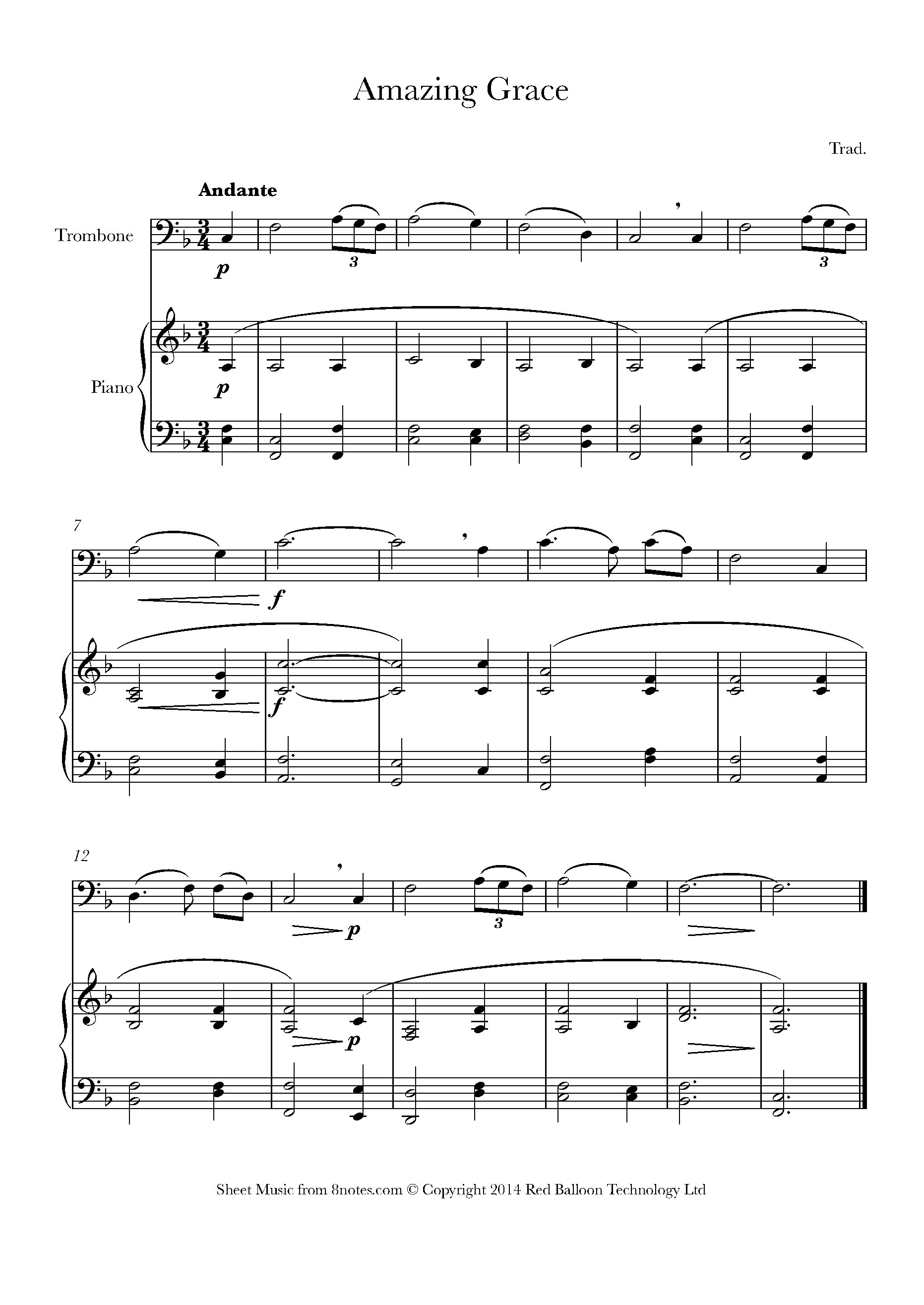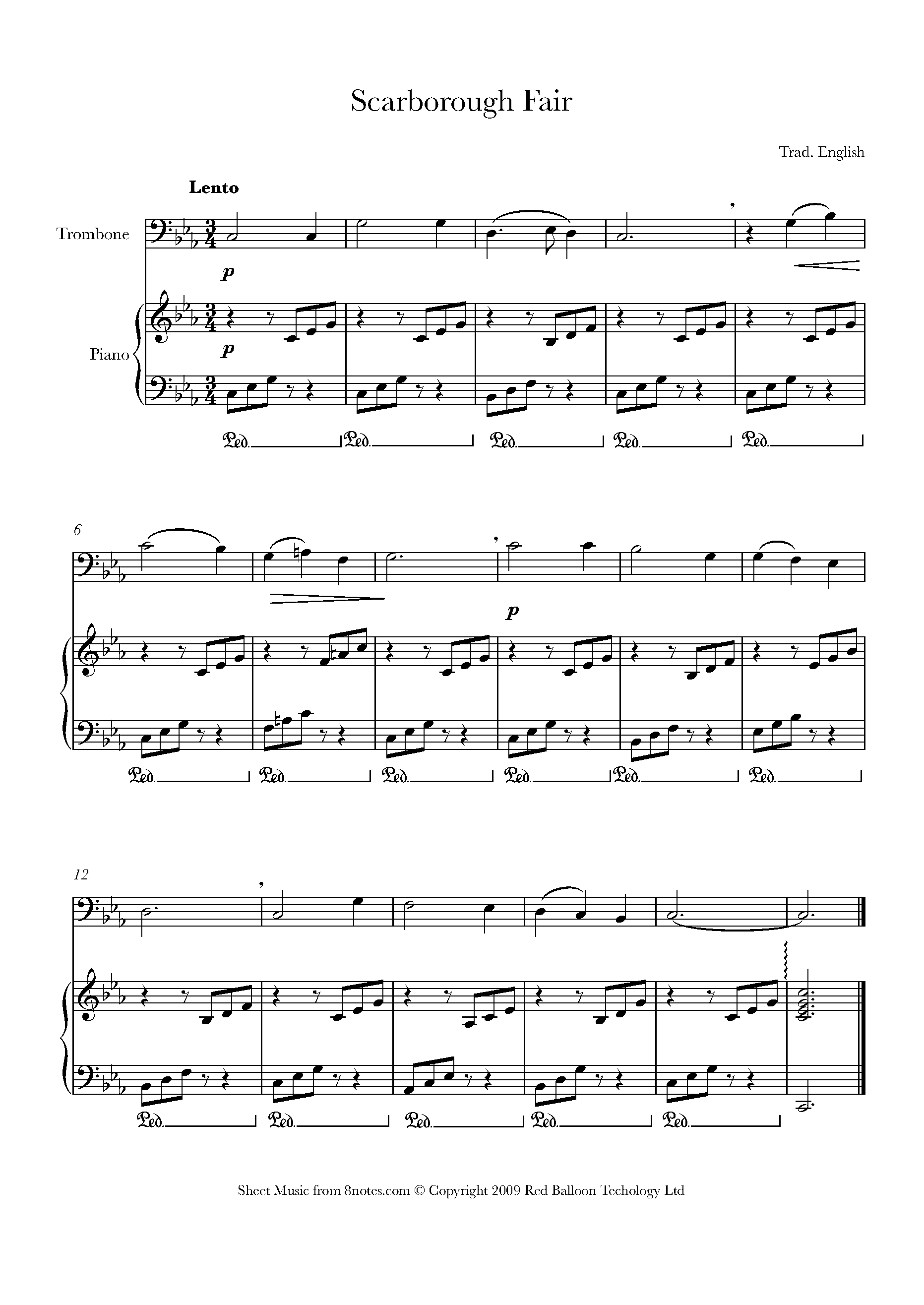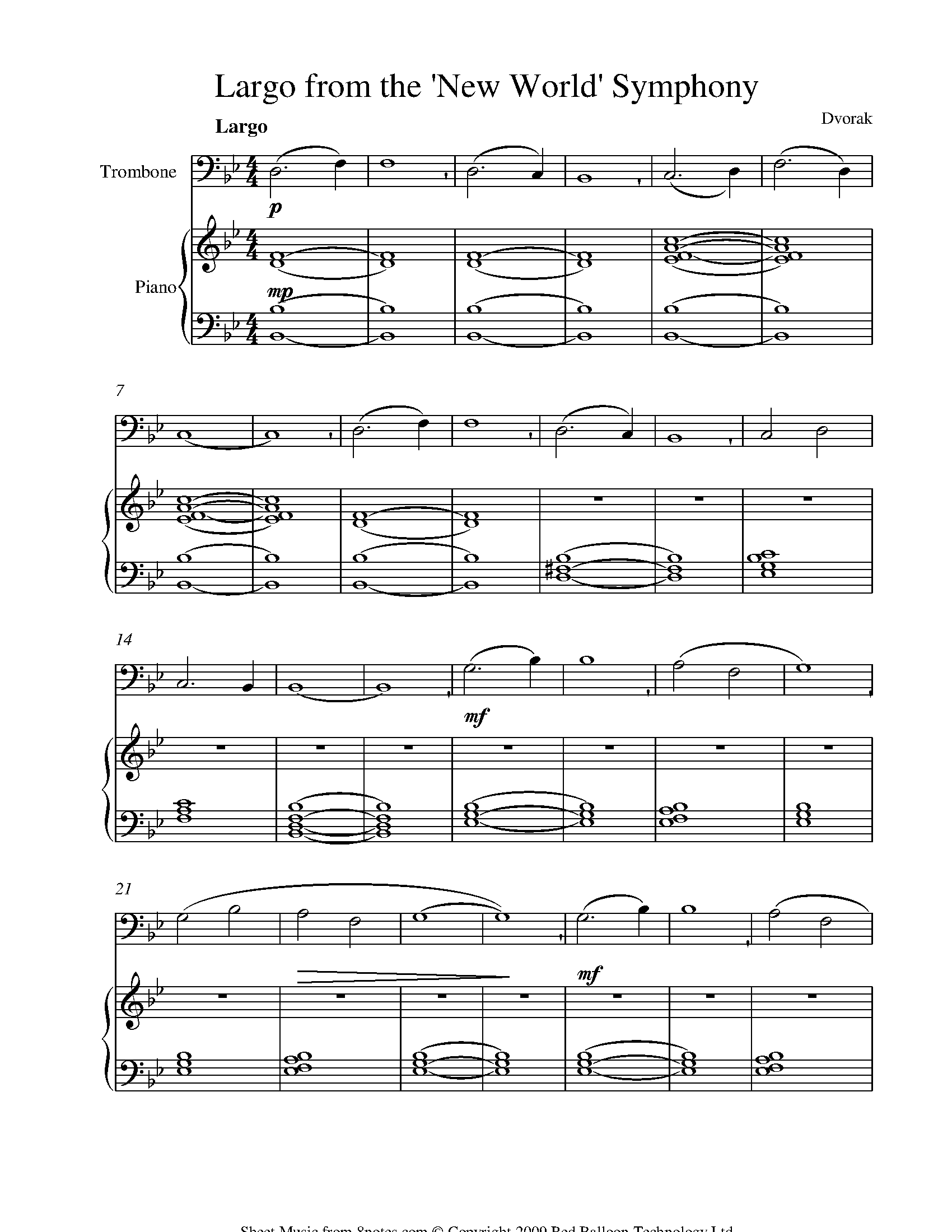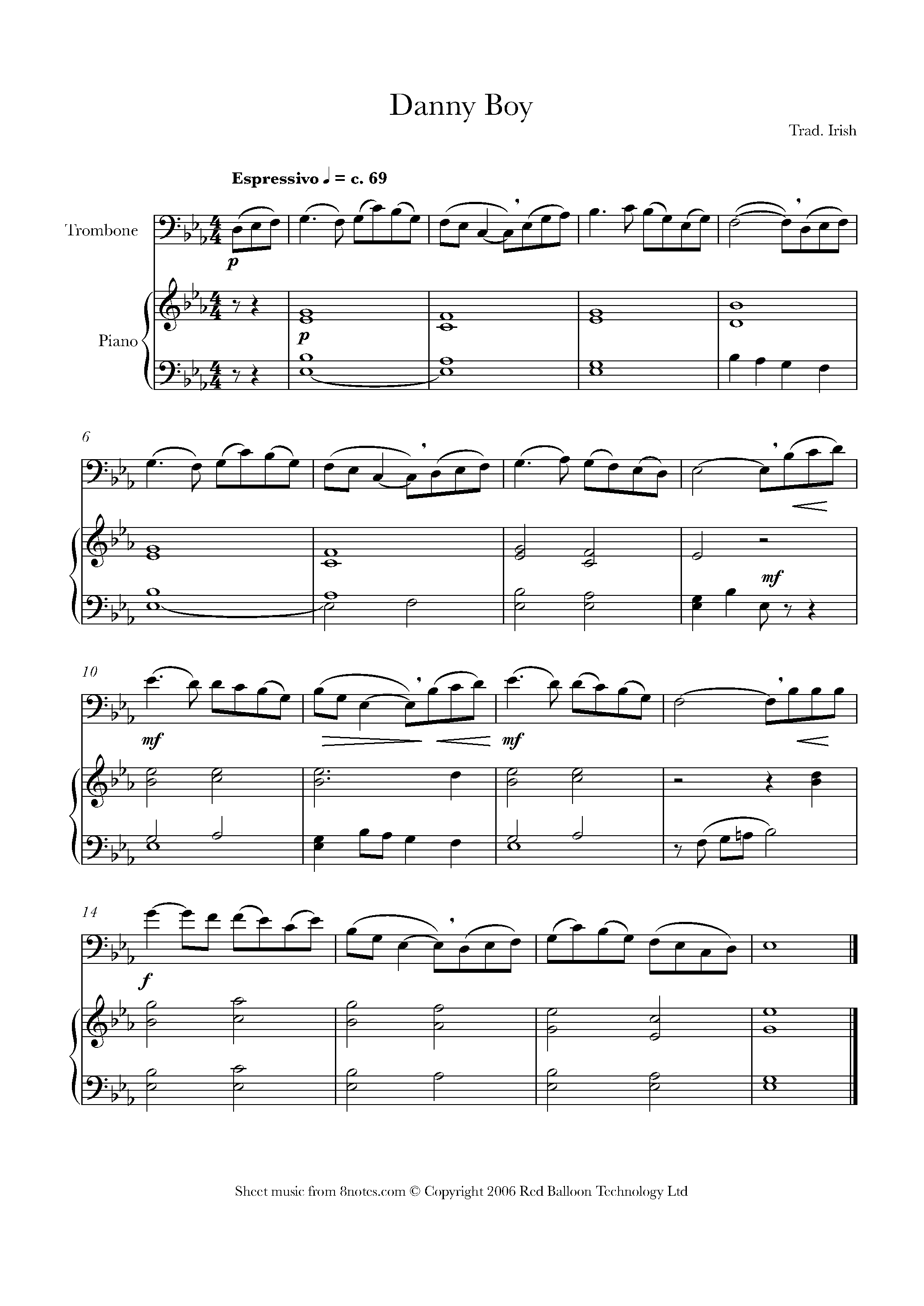4 Trombone Tunes to Practise Breath Control and Legato
by Christian Morris
As well as being one of the loudest orchestral instruments the trombone is also capable of playing with great control and expressivity. This requires a mastery of breath control and legato, both difficult on a large instrument that does not have valves. The following pieces will help you refine these aspects of your trombone technique.
1. Amazing Grace
The tempo of this famous old hymn is relatively slow, which makes good breath control vital. Make sure that breathing does not occur in the middle of phrases. The dynamic level may approach forte but should never sound forced. Remember, that achieving a good slur between two notes on a trombone is achieved in one of three principle ways (assuming no F attachment):1. A lip slur, in which both notes are played on the same slide position. This does not involve the tongue.
2. A cross-grain slur, in which the slide moves in the opposite direction from the note you are moving to (so, for example, the slide goes out when the next note goes up). A quick slide motion will allow you to slur the notes, again without using the tongue.
3. A tongued slur. This is used when options 1 and 2 are not available. The tongue is used lightly in combination with a quick slide motion. This avoids any feeling of glissando between the notes.
Awareness of when to use each of these methods is an important part of learning to play the trombone. Amazing Grace in F major, for example, uses mostly tongued slurs with occasional cross-grained slurs (the g to f in the triplet slur). There are no lip slurs. See if you can make this as smooth as possible.

Amazing Grace
2. Scarborough Fair
There is a greater feeling of movement here, the tempo being one in a bar. This makes breath control a little easier. Again this piece uses tongued and cross-grained slurring.
Scarborough Fair
3. Antonin Dvorak : Largo Theme from the New World Symphony
Don't be fooled by how simple this piece look on the page! It requires a lot of stamina to play it successfully, not to mention superb breath control. You will also need to work the slide hard to avoid any unwanted glissandi.
Largo Theme from the New World Symphony
4. Danny Boy
This piece is challenging both in terms of its long and slow phrases and its wide tessitura (the space between the highest and lowest notes used). It requires a fine control of the techniques already mentioned but also a clear understanding of the shape of the melody - notice how the range reaches gradually higher until the climax at bar 14. Your playing must reflect this, especially by observing the dynamics markings. Note that in Eb major you will also use lip slurring in this piece, from the notes C to Eb at bar 14.
Danny Boy